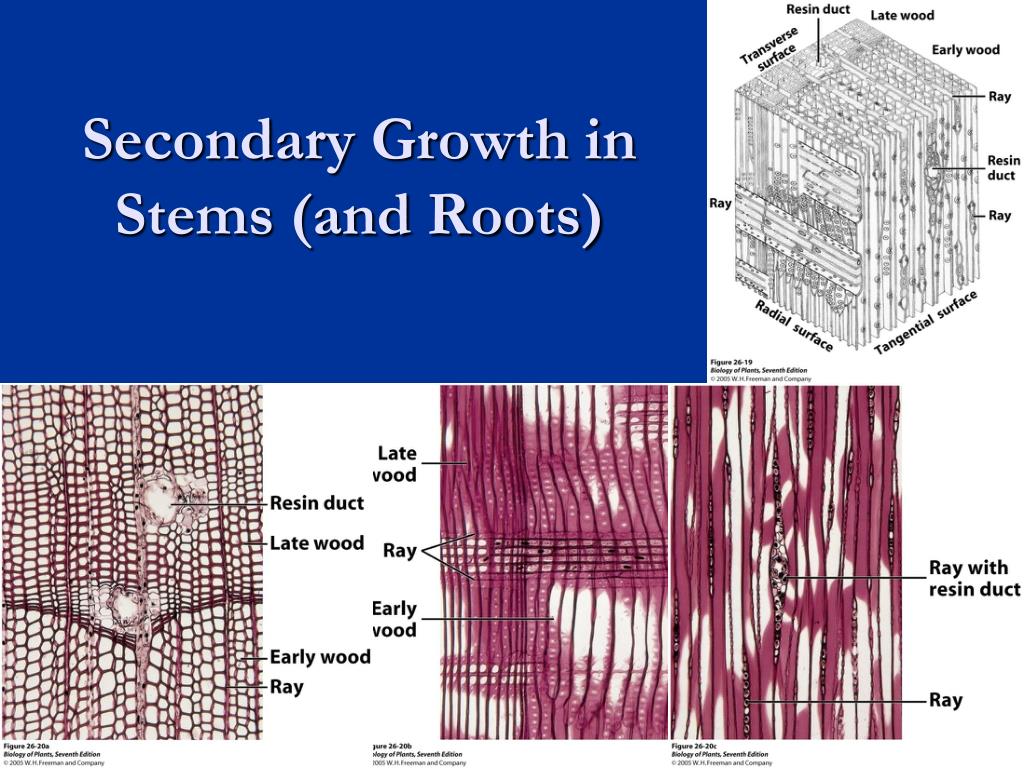Plant Growth Definition
Growth in plants is the development of the root and the shoot system, that is, the roots and other components, the shoot and its parts including branches, leaves, and others.
There are two types of growth in plants – primary and secondary growth.
The two types of growth can be experienced by both monocots and dicots but are more prevalent in biennial and triennial plants.
Primary and Secondary Growth in Plants
Before talking about plant secondary growth and the key importance, the plant primary growth is the increase in length of the root and shoot system of a plant at the cell level, and as a result of the cell division that takes place in the primary meristem.
But for secondary growth in plants, the plant has already increased in length, it’s just the thickness and increase in girth at both the root and shoot level which is a result of the same cell division but at the secondary meristem.
The difference between primary and secondary growth of plants is thus, the level of cell division – primary and secondary meristem, and the increase in length of plants while the other is the thickness of plants.
The primary growth occurs in both root and stem, and is due to the primary meristem while the secondary growth is due to the secondary meristem.
Secondary Growth in Plant and Importance
I’m sure you get the basics of plant secondary growth now. It occurs to the whole plant – root and stem.
Most plant cells do not enlarge or grow anymore after having reached maturity.
However, in perennial dicotyledons, an increase in the height of the plant is accompanied by an increase in the width (or girth) of the plant. An increase in height is due to apical meristems.
An increase in width occurs only after the primary tissues are fully formed and are brought about by special cells which form the cambium.
This is the reason secondary growth is more peculiar to woody plants, vines, trees, shrubs, and other life or cash crops.
Secondary growth, in short, occurs in both angiosperm and gymnosperm.
How Plant Secondary Growth occurs?
The activity of the cambium gives rise to secondary tissues which cause an increase in the girth of the plant.
This lateral growth of the plant is known as secondary growth or secondary thickening.
Monocotyledonous as well as dicotyledonous plants develop into trees and show a marked increase in girth.
The secondary growth in a monocotyledonous stem or root is only the result of the enlargement of the primary cells, that is, the cells that have already been formed. There are no cambium cells in the vascular bundles of these plants.
In dicotyledonous plants, however, secondary growth is very marked and is due to the activity of the primary cambium found between the xylem and phloem tissues of the stems and roots.
These cells divide to produce new xylem and phloem cells which are added to the older ones.
The newly-formed tissues are known as the secondary xylem and secondary phloem.
The secondary xylem consists of scalariform and pitted vessels, tracheids, xylem fibers, and xylem parenchyma while the secondary phloem consists of sieve tubes, companion cells, phloem fibers, and phloem parenchyma.
Usually, a more secondary xylem is formed than secondary phloem.
The cambium also cuts off parenchymatous cells which form secondary medullary rays.
As secondary tissues become enlarged, the primary xylem and phloem get crushed.
The primary tissues, therefore, occupy very little space while the greater part of the stem and root is occupied by the secondary tissues.
Cork Formation
As a result of the increase in the volume of the secondary tissues, pressure is exerted on the peripheral tissues of the stem.
This results in the stretching and rupturing of the epidermal cells. The cortical cells start to stretch also.
To replace the protective outer layer of the stem, a new band of secondary cambium cells arises in the cortex.
This band of cambium is known as cork cambium or phellogen. These cells divide to produce new cells on either side.
Those produced towards the inner side of the stem become new additions to the cells of the cortex and are known as the secondary cortex while those produced outwards towards the epidermis become the cork cells.
Cork cells are thick-walled dead cells that contain air. Their walls become coated with a waterproof substance called suberin.
As the cork cells increase in number, they form a protective waterproof layer.
Together with the ruptured epidermis, they make up the bark of the stem.
As the stem continues to increase in thickness, the bark becomes stretched and splits longitudinally.
The cork layer minimizes the loss of water from the plant, prevents the plant from being damaged by fungi and insects, and acts as an insulation layer.
In the dicotyledonous root, secondary growth is also due to the activity of the primary cambium and the phellogen. However, the bark of the root, unlike that of the stem, forms a thin covering only.
Lenticels
When the cork cells replace the epidermis, air enters the inner tissues of the stem through air pores known as lenticels.
Lenticels are formed in place of stomata. A lenticel is formed when the phellogen cuts off oval, round, or irregular cork cells which are very loosely arranged with a lot of intercellular spaces among them.
In contrast, the other cork cells are rectangular and are arranged compactly. Lenticels are normally visible to the naked eye.








